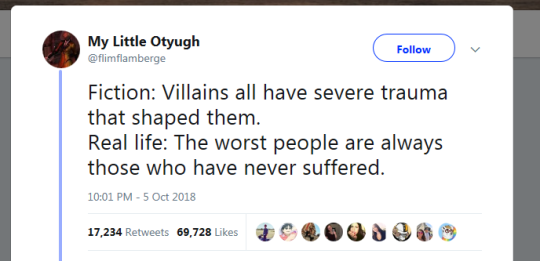Text
Film Analyses/Reviews
The Sacraments of Genre: Coppola, DePalma, Scorsese
Operatic Style and Structure in Coppola's "Godfather Trilogy" (X) (X)
The Godfather—A Year Later: An Examination of The Movie's Internal Structure
The Tragedy of Michael Corleone in "The Godfather: Part III"
Animated Nature: Aesthetics, Ethics, and Empathy in Miyazaki Hayao's Ecophilosophy
The Precarious Politics of Precious: A Close Reading of a Cinematic Text (X)
As I Lay Dying: Violence and Subjectivity in Tarantino’s Reservoir Dogs (X)
Shifting Gears and Paradigms at the Movies: Masculinity, Automobility, and the Rhetorical Dimensions of "Mad Max: Fury Road"
Resurrecting The Godfather
Review: Godfather: The Intimate Francis Ford Coppola
Two Thousand Light Years from Home: Scorsese's Big CASINO (X)
TIME PIECES: WONG KAR-WAI AND THE PERSISTENCE OF MEMORY (X)
Matter out of Place: Carnival, Containment, and Cultural Recovery in Miyazaki's "Spirited Away" (X)
Disney's Moana, the Colonial Screenplay, and Indigenous Labor Extraction in Hollywood Fantasy Films
Viewing Sinophone Cinema Through a French Theoretical Lens: Wong Kar-wai's "In the Mood For Love" and 2046 and Deleuze's "Cinema" (X)
The Parallelism of the Fantastic and the Real: Guillermo del Toro’s Pan’s Labyrinth/El Laberinto del fauno and Neomagical Realism (X)
"Back to the Future": Oedipus as Time Traveller ("Retour vers le futur": Oedipe, voyageur du temps)
Beyond the Male Romance: Repetition as Failure and Success in Apocalypse Now
Beautiful Friendship: Masculinity and Nationalism in "Casablanca"
GIRL POWER: BACK TO THE FUTURE OF FEMINIST SCIENCE FICTION WITH INTO THE FOREST AND ARRIVAL
"Leave the Gun. Take the Cannoli." How Machiavelli's The Prince Exemplifies the Gangster in The Godfather and A Bronx Tale
Film as Literature: TWO SCREENPLAYS (Taxi Driver, Goodfellas)
Where Did the Goodfellas Learn How to Cook? Gender, Labor, and the Italian American Experience
Goodfellas Review (1991)
Where is the Bawdy? Falstaffian Politics in Gus Van Sant's "My Own Private Idaho" (X)
The Filmmaker as DJ: Martin Scorsese’s Compiled Score for Casino (1995)
EAST Meets WEST: "Casablanca vs. The Seven Samurai"
The Power of Adaptation in "Apocalypse Now"
Animalizing "Jurassic Park's" Dinosaurs: Blockbuster Schemata and Cross-Cultural Cognition in the Threat Scene
Review: American Psycho
The Feminine Hero of The Silence of the Lambs (X)
"Fight Club'"s Queer Representations (X)
Tiny Life: Technology and Masculinity in the Films of David Fincher (X)
Complex Design in "The Empire Strikes Back" (X)
SAVAGE PLACES REVISITED: CONRAD'S "HEART OF DARKNESS" AND COPPOLA'S "APOCALYPSE NOW"
PORTRAITS OF THE POSTMODERN PERSON IN TAXI DRIVER, RAGING BULL, AND THE KING OF COMEDY
(X) (X)
Homosexuality in "Dog Day Afternoon" (1975): Televisual Surfaces and a "Natural" Man (X)
Where Did All the Heroes Go? (Dog Day Afternoon)
Italian-Americans in Film: From Immigrants to Icons
God's Lonely Man: "Taxi Driver" in Script and Screen
A Slice of Delirium: Scorsese's "Taxi Driver" Revisited
Kafka on the Screen: Martin Scorsese's "After Hours" (X)
Stalking 'The Deer Hunter'
Gender, Genre, and Myth in "Thelma and Louise" (X)
Restaging the War: "The Deer Hunter" and the Primal Scene of Violence
"The Godfather, I and II": Patterns of Corruption (X)
Making the Milk into a Milkshake: Adapting Upton Sinclair's "Oil!" into P. T. Anderson's "There Will Be Blood"
Child of the Long Take: Alfonso Cuaron's Film Aesthetics in the Shadow of Globalization
THE SWOLLEN BOY: Paul Thomas Anderson's BOOGIE NIGHTS and Diggler Days
Love in Time: Julie Delpy, Ethan Hawke, and Richard Linklater's "Before" Films
Other
Al Pacino (X)
Lies and Loneliness: An Interview with Tony Leung Chiu Wai
Wong Kar-Wai (Interview)
Imagism and Martin Scorsese: Images Suspended and Extended
Docufictions: An Interview with Martin Scorsese on Documentary Film
Orson Welles: The Human Side of Genius
Eavesdropping On Female Voices: A WHO'S WHO OF CONTEMPORARY WOMEN FILMMAKERS (1987)
Disappearance of Elaine May
THE NON-DIEGETIC FALLACY: FILM, MUSIC, AND NARRATIVE SPACE
Hollywood Movie Dialogue and the "Real Realism" of John Cassavetes
THE WORK OF JOHN CASSAVETES: SCRIPT, PERFORMANCE STYLE, AND IMPROVISATION
The Adventure of Insecurity: The Films of John Cassavetes
Prospero's Muccs: The Meaning of Martin Scorsese's Italian American Dialect
Between Colorblind and Colorconscious: Contemporary Hollywood Films and Struggles Over Racial Representation
The Militarization of Marvel's Avengers
BEFORE AND AFTER "JAWS": CHANGING REPRESENTATIONS OF SHARK ATTACKS
Sound Doctrine: An Interview with Walter Murch
Made Men (Goodfellas, Mean Streets, Scorsese Interview)
Beautiful Resistance: The Early Films of Wong Kar-wai
Who Knew It Could Get Worse? When Nixon Haunted the New Hollywood
TV
Sticking Together, Falling Apart: "The Sopranos" and the American Moral Order
"Mad Men"'s Color Schemes: A Changing Palette of Working Women
ETHICAL UPLIFT, "NOT FOR NUTHIN" (Review: The Sopranos)
Writing
Story: Substance, Structure, Style by Robert Mckee
Dialogue - Robert McKee
THE WRITER’S JOURNEY Mythic Structure for Writers
The Art of Dramatic Writing
Anatomy of Story
Into the Woods
—-
(X) = corresponding tumblr post
4K notes
·
View notes
Text










the isolation of modern life
@dog-teeth / phillip lopate / bong joon-ho / lady bird (2017) / fernando pessoa / life's punchline (via: @idleminds)
2K notes
·
View notes
Text
sometimes i think about the golden record and i want to cry
108K notes
·
View notes
Text
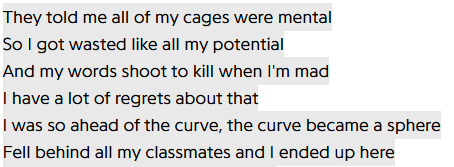


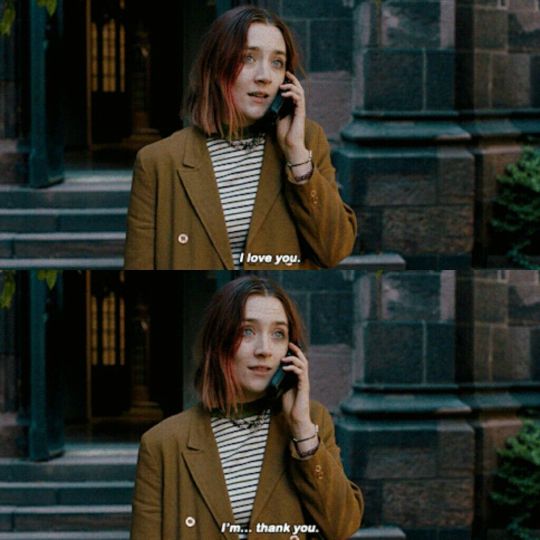


this is me trying
this is me trying, taylor swift // intervention (2016) // beach read, emily henry // lady bird (2017) // the opposite of loneliness, marina keegan
(link to marina’s piece, the opposite of loneliness)
371 notes
·
View notes
Text




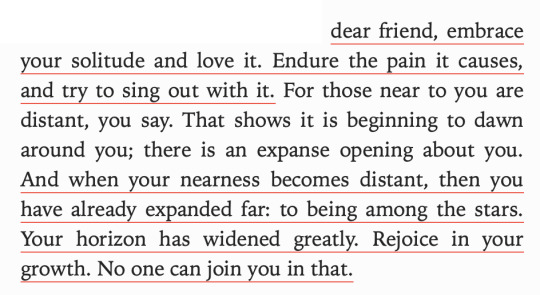


Herman Hesse, from “Steppenwolf” // art(cropped) by Evan M. Cohen // Mary Oliver, Long Life : Essays and Other Writings // art by Beya Rebaï // Rainer Maria Rilke, Letters to a Young Poet // art by María Medem
5K notes
·
View notes
Text










the isolation of modern life
@dog-teeth / phillip lopate / bong joon-ho / lady bird (2017) / fernando pessoa / life's punchline (via: @idleminds)
2K notes
·
View notes
Text
06/03/2019
some recommended viewing if you have an interest in film theory:
> Annihilation—The Art of Self-Destruction
> Why Cosmic Horror is Hard To Make
> How Guillermo Del Toro Uses Violence
> Denis Villeneuve - Crafting Morality Through Mystery
> The Meaning of Red in Movies
> Eastern Promises: A Study In Bodies
> Pan’s Labyrinth: Disobedient Fairy Tale
> Colour In Storytelling
9K notes
·
View notes
Note
How would one write a realistic argument?
How to Write a Realistic Argument
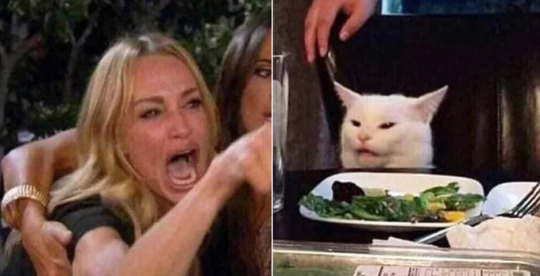
Everyone argues.
Whether it be with a friend, sibling, parent, or coworker—arguments usually break out whenever there’s a stark contrast in opinion over certain things, which can happen a lot.
There are a variety of different kinds of arguments involving a wide range of people with different tempers. Because of this, writing arguments can be a bit difficult, but fear not, for this post is here to help!
1. Know The Writing Style of an Argument
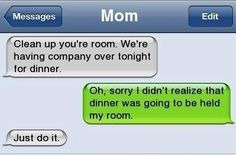
For a very serious argument, the characters probably won’t stop and listen to what their opponent has to say.
It’s quick, choppy, and broken—each character shoving their emotions at one another and trying to get their point across without bothering to understand the other side’s opinions.
There should be a lot of em-dashes and italicized words for emphasis, and if it’s between two people, you want as few speech tags as possible; because there’s going to be a lot of back and forth, speech tags can serve to trip up the flow of the argument rather than help them.
When you do want speech tags or if there are multiple people arguing at once here’s some examples you can use:
Roared
Screamed
Yelled
Bellowed
Barked
Hissed
Shouted
Accused
Interrupted
Growled
Snarled
Spat
Screeched
Shrilled
But you also must know that your characters won’t just be standing stock still and yelling at one another; they’re going to be moving around, so here are some things you can describe your character doing during an argument
Expression contorting
Eyes narrowing
Speaking through clenched teeth
Baring their teeth
Lips twisting (into a sneer/into a snarl)
Hands balling into fists
Trembling
Breaking things/knocking stuff over
Pointing accusingly
Shoving
Spittle flying from their mouth
Stamping their feet
Face getting hot
Vein in forehead popping
Blood roaring in their ears/heart pounding
And if you want, to build tension you can put it in a dangerous place, like at the edge of a cliff or something—so you know fully well that if one of them goes too far it may end up with the other’s accidental death.
Keep reading
7K notes
·
View notes
Photo
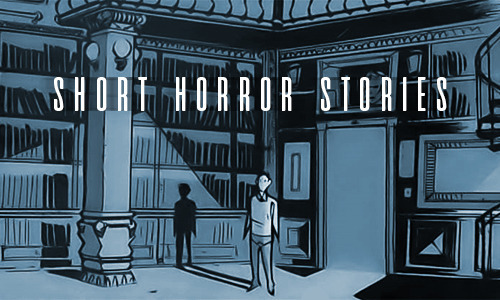
This is a compiled list of some of my favorite pieces of short horror fiction, ranging from classics to modern-day horror, and includes links to where the full story can be read for free. Please be aware that any of these stories may contain subject matter you find disturbing, offensive, or otherwise distressing. Exercise caution when reading. Image art is from Scarecrow: Year One.
PSYCHOLOGICAL: tense, dread-inducing horror that preys upon the human psyche and aims to frighten on a mental or emotional level.
“The Frolic” by Thomas Ligotti, 1989
“Button, Button” by Richard Matheson, 1970
“89.1 FM” by Jimmy Juliano, 2015
“The Yellow Wallpaper” by Charlotte Perkins Gilman, 1892
“Death at 421 Stockholm Street“ by C.K. Walker, 2016
“The Ones Who Walk Away from Omelas” by Ursula K. Le Guin, 1973
“An Empty Prison” by Matt Dymerski, 2018
“A Suspicious Gift” by Algernon Blackwood, 1906
CURSED: stories concerning characters afflicted with a curse, either by procuring a plagued object or as punishment for their own nefarious actions.
“How Spoilers Bleed” by Clive Barker, 1991
“A Warning to the Curious” by M.R. James, 1925
“each thing i show you is a piece of my death” by Stephen J. Barringer and Gemma Files, 2010
“The Road Virus Heads North” by Stephen King, 1999
“Ring Once for Death” by Robert Arthur, 1954
“The Mary Hillenbrand Cassette“ by Jimmy Juliano, 2016
“The Monkey’s Paw” by W.W. Jacobs, 1902
MONSTERS: tales of ghouls, creeps, and everything in between.
“The Curse of Yig” by H.P. Lovecraft and Zealia Bishop, 1929
“The Oddkids” by S.M. Piper, 2015
“Nightmare at 20,000 Feet” by Richard Matheson
“The Graveyard Rats” by Henry Kuttner, 1936
“Tall Man” by C.K. Walker, 2016
“The Quest for Blank Claveringi“ by Patricia Highsmith, 1967
“The Showers” by Dylan Sindelar, 2012
CLASSICS: terrifying fiction written by innovators of literary horror.
“The Tell-Tale Heart” by Edgar Allan Poe, 1843
“The Interlopers” by Saki, 1919
“The Statement of Randolph Carter“ by H.P. Lovecraft, 1920
“The Damned Thing” by Ambrose Pierce, 1893
“The Legend of Sleepy Hollow” by Washington Irving, 1820
“August Heat” by W.F. Harvey, 1910
“The Black Cat” by Edgar Allan Poe, 1843
SUPERNATURAL: stories varying from spooky to sober, featuring lurking specters, wandering souls, and those haunted by ghosts and grief.
“Nora’s Visitor” by Russell R. James, 2011
“The Pale Man” by Julius Long, 1934
“A Collapse of Horses” by Brian Evenson, 2013
“The Jigsaw Puzzle” by J.B. Stamper, 1977
“The Mayor Will Make A Brief Statement and then Take Questions” by David Nickle, 2013
“The Night Wire” by H.F. Arnold, 1926
“Postcards from Natalie” by Carrie Laben, 2016
UNSETTLING: fiction that explores particularly disturbing topics, such as mutilation, violence, and body horror. Not recommended for readers who may be offended or upset by graphic content.
“Survivor Type” by Stephen King, 1982
“I’m On My Deathbed So I’m Coming Clean…” by M.J. Pack, 2018
“In the Hills, the Cities” by Clive Barker, 1984
“The New Fish” by T.W. Grim, 2013
“The Screwfly Solution” by Racoona Sheldon, 1977
“In the Darkness of the Fields” by Ho_Jun, 2015
“The October Game” by Ray Bradbury, 1948
“I Have No Mouth, and I Must Scream” by Harlan Ellison, 1967
HAPPY READING, HORROR FANS!
53K notes
·
View notes
Text
we should just do each others dishes more. there is no punchline at the end of this text post. dishes suck and they’re often the first thing that falls to the wayside when someone is depressed, or having a bad time, or just plain busy. i cannot tell you how many times i have just had my glass of wine or a joint standing at the kitchen sink - sure, we could sit on your couch, but if we’re just going to talk and vibe anyway, i might as well do these for you. it’s an act of simple love. i never feel more grateful than for the people who come into my home and share domesticity as friendship. it’s neither a burden nor a chore to help; theyre not my dishes. they’re yours. and we can do them together.
54K notes
·
View notes
Text
so heres a thing my mother always said to me growing up when i broke something on accident that i think is really important
and i know, from watching my friends and seeing their panic and terror when something broke, that not only were not nearly enough children told this thing, many children were punished in place of being reassured
and thats heartbreaking
so heres the words from my mom that i was always told, and theyre the same words that anyone who never got to hear them should hear now, courtesy of my mom, who has repeated those same words to many a friend of mine and now to you
if i ever broke anything, the first words out of her mouth would always be and have always been, “are you hurt?”
i would say no
she would say, “thats okay, then”
and i would ask why
and she would say “because it was just a thing- even if its a nice thing, or an old thing, or an expensive thing, its still just a thing. it can be replaced, or we can live without it. there is only one you. there will only ever be one you. you will always be more important than just some thing.”
157K notes
·
View notes
Text
Creating Dynamic Characters That Feel Real
Despite what people may have led you to believe, the plot or structure is not the most important thing about your story–whether it’s a screenplay, short story, novel. That’s not what makes the story real and important. That’s not why your readers care.
Characters are the most important part of your story. Without them, you have nothing. Your story is nothing.
If you want your readers to find your story complex, compelling, and dynamic, then your characters have to be complex, compelling, and dynamic. You’re thinking, “Oh, that’s easy. I’ve already done that.” Your babies are complicated. They’re beautiful but damaged. Intelligent but socially awkward. They want to be an astronaut; they want to save the world.
Sorry, but you’re full of shit.
Characters aren’t just characters, they’re real people, even if they only exist in ink and paper and your mind rather than in flesh and blood. They need to be as real to your readers as their mother, father, best friend, the person sitting next to them. Otherwise, you have failed. Flesh them out, bring them to life on the page.
Your characters are the heart and soul of your story, and you need to treat them as such. That is your job as a writer. And when you don’t do that, you not only fail your readers and your story, you not only do yourself a great disservice, but you also expose yourself. You reveal something to your readers that you don’t want them to know. As Claudia Hunter Johnson says in her book, Crafting Short Screenplays That Connect (which is an excellent book I recommend you all read), character creation is “an artistic and ethical issue.”
Repeat after me: It is an artistic and ethical issue.
Keep reading
2K notes
·
View notes
Text
The Emotions of Horror
In order to successfully write horror, you must first understand fear. Fortunately, fear is a universal experience, and likely something you have intimate first-hand knowledge of - the key is learning to harness your fears so they can be translated for the page.
First, recognize that different techniques and approaches will work better in different media. What works well in a horror movie may not translate well to a written story, and vice versa. Understanding your medium and your goals will help you work to the strengths of the medium and provide the most effective approach.
Second, remember that horror, perhaps more than any other genre, is at its core interactive. Even a linear story told through writing or visual cues invites participation from the reader: You need them to engage so that they will bring their own fears to the table. Simply seeing characters interact with frightening things isn’t enough; you need to invoke fear in the reader by inviting them to experience the things that you describe. That’s something I’ll delve into in greater detail in a later post, but for now, keep it in the back of your mind.
Two Main Types of Horror
There are two primary types of horror reactions you can create in a reader: Visceral horror, and cerebral horror.
Visceral horror is felt in the gut. It preys upon the lizard brain and taps into basic primal fears. Visceral emotions include disgust and shock. It is most effective in visual media, where a viewer sees images and responds to them before their brain has a chance to process them, but you can still invoke these feelings through the careful use of description. More on that in a minute.
Cerebral horror is felt in the brain. It’s the type of horror that you think about hours or days or years later, the kind of disturbing ideas that implant themselves in there and become more frightening the more you consider them. These are rooted in anxiety rather than the primal lizard brain. Cerebral horror includes fridge horror and dread. A tightly crafted story will beat a movie every time when it comes to cerebral horror, because written media is more intimate. Use that to your advantage.
The Emotions of Horror Stories
Let’s talk in a little more detail about the emotions that you should work to create in your reader when crafting a horror story. In order of most-difficult to most-natural for the written medium, try experimenting with:
Shock: Films and video games can fall back on the “jump scare,” a tactic wherein you rapidly break suspense with a sudden visual cue, almost always accompanied by a loud noise. If you need an example for some reason, turn to the nearest Five Nights At Freddy’s game.
Jump scares work by temporarily startling the viewer, short-circuiting their conscious brains and tapping directly into their oldest and most primal reflex. Newborns startle when they are exposed to too much sensory input - it’s literally their first line of defense. When you jerk, scream, or flail, you are tapping in to the newborn infant part of your brain.
Can you do a jump scare in a novel? Probably not. For one, there is no sound, and sound is extremely important to a successful jump scare. For another, reading involves conscious interaction with text; you can’t really bypass their thought processes enough to invoke a jump scare response (except for the occasionally really susceptible reader).
But you can still shock them, and that’s just as good.
Shock occurs when a reader is totally blind-sided by new information. They think they know what’s going on, but in reality, the truth is something unexpected (and perhaps far more sinister). They think a certain character is safe, only for them to be suddenly and brutally murdered. They think they’ve solved the puzzle, but the rabbit hole actually goes much deeper. I’ll talk about shock in greater length in another post, because it is so difficult to do well and requires a lot more attention.
Disgust: Gore and “splatterpunk” relies on the visceral response of disgust. We are naturally repulsed by certain things, and that too may be hardwired into our DNA (although it’s also partly based on nurture and cultural factors). But basically, disgust exists to keep us away from things that may hurt us, like diseased things.
Triggering disgust in your reader will mostly fall to writing effective descriptions. Word choice matters a lot when it comes to writing gore. Some words just feel gross (think “moist”), and some invoke really icky mental images. I’ll write a whole thing on tricks to writing gore at a future point, but for now a word of caution: Horror cannot rely on gross-out scenes alone. You might invoke a kind of sick fascination in the reader, but you won’t really scare them.
Dread: Suspense and dread are vital ingredients to horror in any medium. They work by drawing the reader into the story, enticing them to think ahead - but stripping away their certainty about what will happen. A really good story will alternate between shock and dread, building up tension before twisting the narrative in an unexpected direction.
I wrote a little bit about invoking dread here, and I’ll delve into the topic at greater length later. But for now, remember: Suspense lies in giving the reader the pieces to a puzzle, but withholding context. It forces the reader to think ahead, to try and make sense of what they’re seeing, and to imagine terrible conclusions. It encourages the reader to think “what if…?” or “something terrible is going to happen but when? how? what?”
This is something you can only do well if the reader is invested in the characters and truly cares about them. Fortunately, because writing is so intimate, it’s easier to delve into a character’s mind and forge a strong connection between them and the reader.
Fridge horror: Fridge horror is basically when something becomes creepier or more disturbing the longer you think about it. It’s when the implications of something are more horrifying than what you see on the surface. It’s the part of the story the reader takes with them, the part that makes them question their own beliefs or world-view or even reality.
It is a cerebral horror, and it’s the thing that written stories can really excel at. I will - you guessed it - write a whole post on the topic in the near future, but until then, realize that fridge horror relies in part on logic (”oh god, this means THAT!”) and part empathy (”can you imagine what it must be like….?”)
The best fridge horror moments will be pulled from your own personal experiences and fears. While anyone can tap into primal fears (the dark, the unknown, disgusting things), fridge horror is often deeply personal and oddly specific. It’s raising a question and leading the reader to think “Oh god, I never thought of that, but it is terrible.”
I’ve rambled on a long time now, and I have many things to come back to and explain in more detail - but for now, hopefully this gives you something to think about! Until next time, stay scared :)
If you like this type of content and would like to see more, please consider leaving a tip in my Tip Jar!
8K notes
·
View notes

